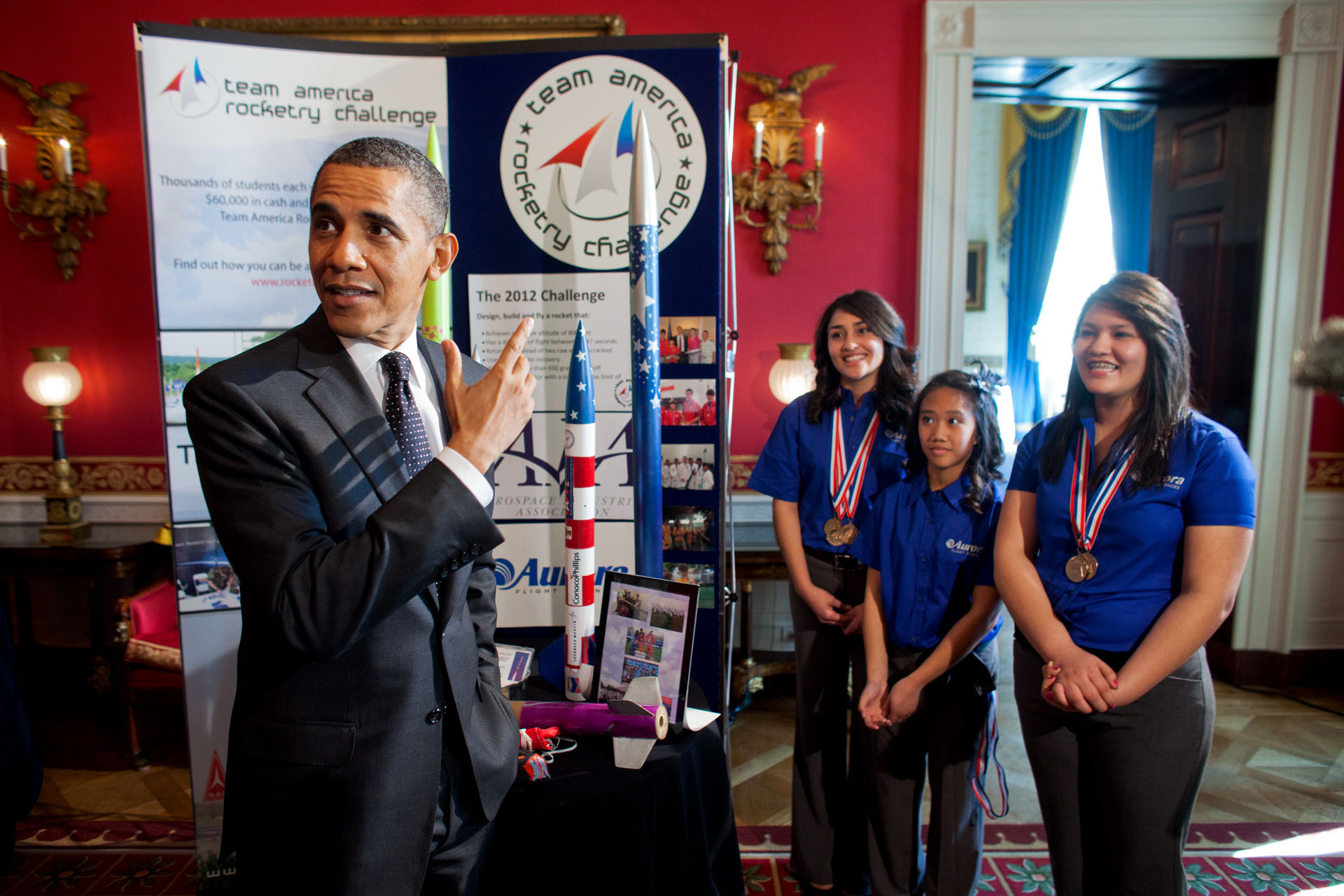Programs that promote diversity in science education

President Obama hosts a White House Science Fair celebrating student winners from a broad range of STEM competitions from across the country (Credit, the White House)
The White House recently released a fact sheet as part of its efforts to promote Women in STEM (Science, Technology, Education and Mathematics). The fact sheet focuses largely on how implicit bias (unconscious or unintentional assumptions that influence perceptions and judgements of others) can hinder participation among women and other underrepresented demographic groups in STEM-related fields. This finding reinforces the need for programs and initiatives that help promote careers in science for traditionally underrepresented groups.
During the most recent edition of the Ecologist Goes to Washington podcast, 2015 Ecological Society of America (ESA) Graduate Student Policy Award winner Natalie Hambalek, a first generation college student, highlights some of the science education programs available to underprivileged and underrepresented minorities. She also discusses her work to promote careers in science for young women as Co-President of Graduate Women in Science at Oregon State University.
“When young students are asked to draw scientists, they draw and Einstein-looking man, usually with big glasses, frazzled hair, a lab coat and a chemistry flask. I think there’s this common notion that science isn’t accessible because of the use of a lot of technical jargon. So I wanted to help in changing this stigma, particularly engaging young girls in science activities,” stated Hambalek.
“Because women are traditionally underrepresented in many STEM fields, I think it’s really important to assist in normalizing women in science,” she continued.
She also cites three programs she participated in that help promote educational opportunity and career growth in STEM fields:
The Louis Stokes Alliances for Minority Participation program is a program specifically targeted to racial and ethnic groups traditionally underrepresented in Science, Technology, Engineering and Mathematics (STEM) fields. Funded through the National Science Foundation, the program helps colleges and universities in their efforts to increase the number of student who obtain STEM-related degrees among these underrepresented groups.
The Ronald E. McNair scholarship is a federal TRIO program funded by the US Department of Education. The program funds 151 institutions throughout the United States and Puerto Rico. The McNair program is geared towards individuals with demonstrated strong academic potential who are either first-generation college students with financial need or members of a demographic that has been traditionally underrepresented in graduate education.
Sponsored through the Aspen Institute, the William Randolph Hearst Endowed Fellowship for Minority Students offers graduate students and undergraduate students from underrepresented communities of color the opportunity to work within the Aspen Institute, a non-profit research think tank. The program promotes collaboration between grant-making entities, non-profit groups, social enterprises and public-private partnerships towards addressing various policy issues facing society.
Within ESA, Strategies for Ecology Education, Diversity and Sustainability (SEEDS) has worked to reduce the under-representation of certain minority groups in fields of ecology, predominantly through providing resources and opportunities for undergraduate students.
Collectively, Hambalek states these programs provided valuable mentors and helped her obtain research skills as an undergraduate that have aided her in her current pursuits as a graduate student.
“Being able to design, conduct, analyze and disseminate a research project as an undergrad definitely gave me an advantage in graduate school,” she said. “I am very thankful to have been a part of these federal and state programs that helped me get to where I am now.”